Introduction
If you’ve ever published the same article on Medium, LinkedIn, and your blog, you’ve probably noticed something strange. One platform rewards you instantly, another barely reacts, and the third takes weeks before you see results.
The reason isn’t luck or timing, it’s platform mismatch.
Every platform has its own ecosystem. Medium thrives on stories, LinkedIn favors professional insights, and WordPress ranks structured, SEO-rich guides. When you try to “copy-paste” content everywhere, you end up pleasing no one, not the reader, and not the algorithm.
In this guide, we’ll break down exactly how to write for Medium, LinkedIn, and WordPress in 2025. You’ll learn what makes content go viral (or flop) on each, and how to adapt one idea into three high-performing formats.
By the end, you’ll know how to stop duplicating content, and start amplifying it.
Why Writing Rules Differ Across Platforms
It’s tempting to believe that good writing is universal. If you’ve written a brilliant post, why not just publish it everywhere and expect the same results?
The problem is, platforms shape behavior. The audience, the context, and the algorithms are all different, and so the same article can soar on one platform and sink on another. Let’s look at why.
1. Audience Expectations Shape Virality
Each platform attracts a different kind of reader:
- Medium readers are curiosity-driven. They browse for fresh stories, new perspectives, and relatable experiences. They’re open to emotion, vulnerability, and narrative. If your piece feels too much like a corporate whitepaper, it dies on arrival.
- LinkedIn readers are professionals scanning during work breaks. They don’t want to scroll through your life story. They want quick, practical lessons framed as bullet points, frameworks, or case studies. Their unspoken question is always: “How does this help me do my job better today?”
- WordPress readers often arrive via Google. They’re searching for specific answers: “How to automate business processes” or “Best productivity apps 2025.” Their patience is limited. If your blog doesn’t deliver clear, structured value fast, they bounce.
👉 Takeaway: Virality depends on giving readers the experience they came for. The same headline, tone, or format won’t resonate across all three.
2. Algorithms Reward Different Signals
Even if your writing is brilliant, it won’t spread unless the algorithm approves. Each platform has its own “reward system”:
- Medium’s algorithm boosts stories with strong engagement early, claps, highlights, and reading time. The more personal and relatable the hook, the better your chances.
- LinkedIn’s algorithm cares about early interaction, especially comments. Posts that spark conversation (“What’s one leadership mistake you made?”) perform far better than monologues.
- Google (WordPress) ranks content for long-term relevance. It doesn’t care about your story; it cares about keyword optimization, authority, and backlinks. A blog that’s invisible at launch can quietly grow into an evergreen traffic driver months later.
👉 Takeaway: What counts as “engagement” isn’t the same. Virality on Medium is about personal resonance. On LinkedIn, it’s about professional conversation. On WordPress, it’s about structured authority.
3. Tone and Format Drive Engagement
One of the most overlooked differences is tone. The same voice that shines on Medium can flop on LinkedIn.
- Medium tone: conversational, reflective, even vulnerable. Write like you’re talking to a friend over coffee.
- LinkedIn tone: authoritative, concise, confident. Write like you’re presenting to colleagues in a boardroom.
- WordPress tone: instructional and credible. Write like you’re publishing a manual or guide.
The format matters just as much:
- Medium thrives on narrative arcs.
- LinkedIn thrives on lists and frameworks.
- WordPress thrives on subheads, FAQs, and keyword-rich structure.
👉 Takeaway: Adjusting your voice and format is just as critical as adjusting your topic.
4. Timeframe of Results
Finally, virality looks different in terms of timing.
- On Medium, you’ll know within 24–48 hours if your article is taking off. The platform prioritizes fresh content.
- On LinkedIn, you’ll often see traction in the first few days as your network engages.
- On WordPress, results are slow but steady. You may see little at first, but over weeks and months, your optimized post can climb Google rankings and generate recurring traffic.
👉 Takeaway: On Medium and LinkedIn, virality is fast and fleeting. On WordPress, virality is slow and compounding.
Putting It All Together
If you treat all three platforms the same, you’ll be disappointed. But once you understand these differences—audience expectations, algorithm triggers, tone, format, and timeframes, you can stop wasting energy and start maximizing results.
Think of it like this:
- Medium is for stories that spread quickly.
- LinkedIn is for insights that spark conversation.
- WordPress is for guides that rank long-term.
Mastering these distinctions is the foundation for writing that wins in 2025.
Writing for Medium in 2025
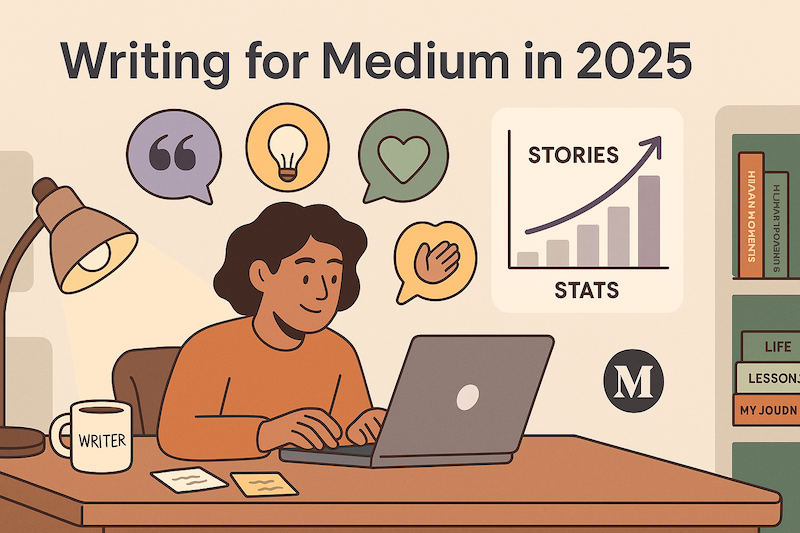
If there’s one thing you need to know about Medium, it’s this: stories win over stats.
Medium readers aren’t there for technical whitepapers or keyword-heavy guides. They come for relatable experiences, personal insights, and lessons hidden inside stories. The platform’s viral DNA is built on curiosity and human connection.
What Medium Readers Expect
Medium’s audience is diverse – students, creatives, entrepreneurs, and everyday readers. But they all share one expectation: authenticity.
- They want stories, not lectures.
- They want clarity, not jargon.
- They want vulnerability, not polish.
A headline like “Why Multitasking Destroys Your Focus (and What to Do Instead)” works far better than “Productivity Frameworks for Professional Optimization.”
👉 Pro Tip: If your opening line sounds like it could be read aloud at a coffee shop and spark a conversation, it’s probably perfect for Medium.
How to Structure Medium Articles in 2025
Medium articles that perform best follow a clear arc:
- Hook (first 1–2 lines)
- Grab attention with curiosity or a bold claim.
- Example: “I quit coffee for 30 days. Here’s what happened.”
- Story (the narrative)
- Share your personal experience or the story behind your insight.
- Keep it human, simple, and engaging.
- Lesson (the insight)
- What did you learn? Why does it matter to the reader?
- Example: “Multitasking felt productive, but here’s the science behind why it failed.”
- Takeaway (the gift to the reader)
- Make it actionable. Give them one thing to try.
- Example: “Instead of juggling five things, try the 2-minute rule tomorrow morning.”
Examples of Medium-Friendly Titles
- I Tried Waking Up at 5 AM for 30 Days. Here’s What Happened
- The $100 Mistake That Cost Me 6 Months of Work
- Why Most Productivity Hacks Fail (and the Simple Fix That Works)
Notice how all of these titles:
- Spark curiosity.
- Suggest a story.
- Promise a payoff.
Virality Triggers on Medium
Medium’s algorithm favors engagement signals like claps, highlights, and reading time. To maximize reach:
- Use strong hooks to keep readers past the first 10 seconds.
- Break up text with short paragraphs for easy scanning.
- Add images sparingly to complement (not clutter) the story.
- End with a question to invite comments, e.g., “Have you ever quit something for 30 days? What did you learn?”
👉 Key Insight: Virality on Medium isn’t about keywords, it’s about connection. The more a reader feels like they’re in your story, the more likely they are to share it.
Writing for LinkedIn in 2025
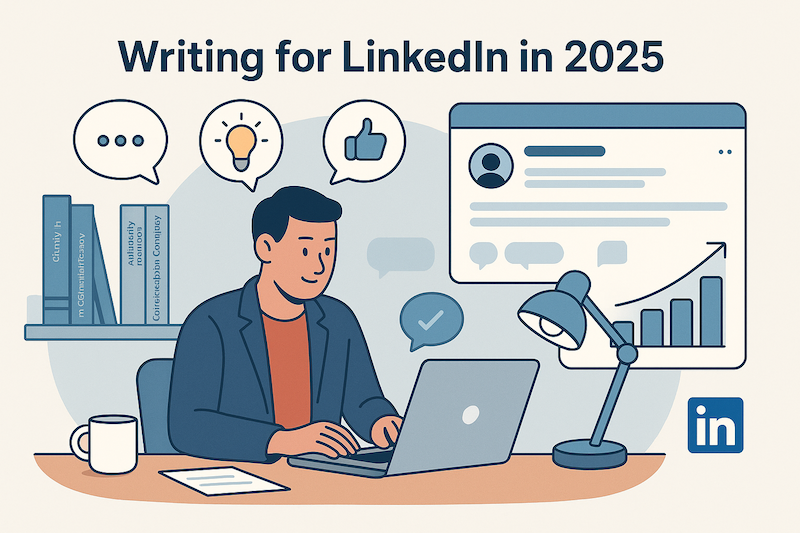
LinkedIn is no longer just a place to upload résumés. In 2025, it’s a professional publishing platform where posts can reach thousands—even millions—if they hit the right notes. But virality here doesn’t look like Medium’s “story-driven” success or WordPress’s “SEO traffic.” Instead, it’s about authority, clarity, and sparking conversation.
What LinkedIn Readers Expect
Think of LinkedIn as a digital conference room. Everyone’s busy, and attention is scarce. Your readers are:
- Professionals scrolling during breaks.
- Decision-makers looking for insights.
- Leaders and peers seeking inspiration or frameworks.
👉 Their unspoken question: “How does this help me in my career, business, or team—today?”
That’s why value-first writing wins. The story is secondary. The lesson is everything.
How to Structure LinkedIn Articles in 2025
LinkedIn readers skim, so your structure must be tight and digestible:
- Hook (first 2–3 lines)
- Must stop the scroll.
- Use a bold statement or question.
- Example: “I made 5 leadership mistakes that nearly cost my career. Here’s what you can avoid.”
- Insight (the value)
- Deliver the lesson fast.
- Frameworks, numbered lists, or quick case studies work best.
- Proof (credibility)
- Share a short story, stat, or example that backs up your point.
- Example: “After introducing daily check-ins, productivity increased 40%.”
- Engagement (the close)
- End with a question to invite comments.
- Example: “What’s one leadership mistake you learned the hard way?”
Examples of LinkedIn-Friendly Titles
- 5 Leadership Mistakes I Made So You Don’t Have To
- How Our Team Cut Costs by 40% Without Losing Growth
- Why Deep Work Is the Most Valuable Skill in 2025
Notice:
- They’re practical, not poetic.
- They emphasize results, numbers, or lessons.
- They promise career relevance.
Virality Triggers on LinkedIn
LinkedIn’s algorithm rewards engagement in the first hour—especially comments. To maximize reach:
- Use short paragraphs (1–2 lines max) for scannability.
- Prioritize bullet points and lists to deliver takeaways quickly.
- Invite discussion at the end.
- Tag people or companies when relevant, but only if authentic.
👉 Key Insight: Virality on LinkedIn isn’t about the best story. It’s about the most useful lesson, delivered fast.
Writing for WordPress in 2025
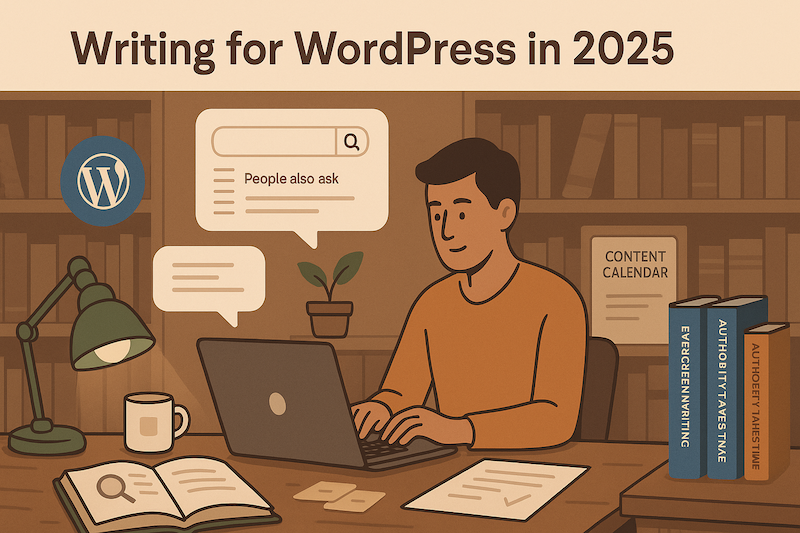
If Medium is the coffee shop and LinkedIn is the conference room, WordPress is the library. People don’t come here to be entertained—they come to find answers. And Google decides whether they’ll ever find you.
WordPress success is not about instant virality. It’s about building long-term, evergreen authority that compounds over time.
What WordPress Readers Expect
Most WordPress readers don’t know you. They discover your blog through search. That means they expect:
- Answers to specific questions (“best AI tools for small businesses”).
- Step-by-step guides that actually solve problems.
- Clear structure so they can skim or dive deep as needed.
👉 Their unspoken question: “Is this article worth my time—or should I click the next Google result?”
How to Structure WordPress Articles in 2025
WordPress articles are built for search intent first, then human readability:
- SEO-Optimized Title
- Must include primary keyword.
- Example: “Best Productivity Apps for Entrepreneurs in 2025 [Tested & Reviewed].”
- Introduction
- Hook the reader with empathy for their problem.
- Promise a solution.
- Table of Contents (Optional)
- Helps navigation and boosts SEO.
- Main Content (H2s + H3s)
- Use structured subheads that answer search queries.
- Example: “What Makes a Productivity App Effective?”
- Actionable Takeaways
- Lists, comparisons, FAQs.
- Closing CTA
- Encourage further reading, downloads, or comments.
Examples of WordPress-Friendly Titles
- Best AI Tools for Small Businesses in 2025 [Comparison Guide]
- How to Automate Business Processes: Complete 2025 Guide
- Top 10 Productivity Hacks Backed by Science (Updated 2025)
Notice:
- They’re keyword-heavy.
- They match search intent (how-to, best, top 10, guide).
- They signal depth and freshness (use of “2025”).
Virality Triggers on WordPress
On WordPress, virality = Google visibility + user trust. To maximize results:
- Optimize for semantic keywords (e.g., “AI productivity tools,” “workflow automation”).
- Add depth with comparisons, examples, and FAQs.
- Keep formatting scannable with bullet points, bolding, and tables.
- Update regularly—fresh content gets favored in rankings.
👉 Key Insight: Virality on WordPress isn’t about quick spikes. It’s about building evergreen authority that Google rewards and readers trust.
One Idea, Three Versions
The easiest way to understand these differences is to look at a single idea and see how it changes across platforms. Let’s take a simple topic: morning routines for productivity.
Medium Version: Story-Driven
Title: I Tried Waking Up at 5 AM for 30 Days—Here’s What Happened
- Opening Hook: “I used to roll out of bed at 8:30, grab coffee, and rush into work. Then I tried waking up at 5 AM for a month—and my life flipped upside down.”
- Body: Narrative of struggle, what worked, what failed, emotional highs/lows.
- Lesson: Share the personal growth and insights you gained.
- Closing: “If you’ve ever thought about becoming a morning person, try it for 7 days. You might surprise yourself.”
👉 Works on Medium because it’s relatable, authentic, curiosity-driven.
LinkedIn Version: Framework-Driven
Title: 3 Productivity Lessons I Learned From Waking Up at 5 AM for 30 Days
- Opening Hook: “I tested a new morning routine for 30 days. The results? Productivity up, distractions down. Here are 3 lessons you can apply today.”
- Body: Short, scannable insights:
- Early hours = deep work time.
- Small rituals set the tone (journaling, stretching).
- No phone before 8 AM.
- Proof: Include a quick data point or stat.
- Closing Question: “What’s one habit in your morning routine that makes the biggest difference?”
👉 Works on LinkedIn because it’s professional, practical, and invites discussion.
WordPress Version: SEO-Optimized Guide
Title: How to Build a Morning Routine That Boosts Productivity in 2025
- Opening Hook: “Struggling with focus and consistency? Your morning routine could be the problem. In this guide, we’ll break down exactly how to build one that works in 2025.”
- Body:
- H2: Why Morning Routines Matter for Productivity (include research/statistics).
- H2: Morning Routine Ideas Backed by Science
- H3: Wake up earlier.
- H3: Exercise or stretch.
- H3: Plan your top 3 tasks.
- H2: Common Morning Routine Mistakes to Avoid
- Closing CTA: “Want more productivity tips? Download our free routine planner.”
👉 Works on WordPress because it’s structured, keyword-rich, and evergreen.
Side-by-Side Comparison
| Platform | Hook Style | Body Focus | Ending Style | Virality Trigger |
|---|---|---|---|---|
| Medium | Curiosity + personal | Storytelling + emotion | Reflection or challenge | Relatability + shares |
| Bold + practical | Frameworks, lists, lessons | Open-ended question | Comments + saves | |
| WordPress | SEO + problem/solution | Structured guide, H2/H3s | CTA or resource | Search traffic + trust |
👉 Key Takeaway: One idea can live on all three platforms—but only if you adapt the voice, structure, and intent.
Common Mistakes Writers Make
Most writers fail on these platforms not because their ideas are bad—but because they apply the wrong approach. Here are the most common mistakes:
1. Copy-Pasting Across Platforms
The same post rarely works everywhere.
- Why it fails: Medium readers want stories, LinkedIn wants insights, and WordPress needs structure. One-size-fits-all = no fit anywhere.
- What to do instead: Adapt your idea into three versions. Story for Medium, lessons for LinkedIn, guide for WordPress.
2. Ignoring SEO on WordPress
Many writers treat blogs like personal journals. That’s a mistake.
- Why it fails: Google won’t rank unstructured, keyword-light content.
- What to do instead: Use keyword-rich titles, H2/H3s, semantic keywords, and FAQs. Think “Google first, reader second—but write for both.”
3. Writing Overly Personal Posts on LinkedIn
LinkedIn is not Medium. Your career reflections won’t land unless they translate into lessons.
- Why it fails: Professionals scroll for value, not long personal stories.
- What to do instead: Frame your story as a case study or framework. Deliver the takeaway fast.
4. Skipping Storytelling on Medium
Medium is not LinkedIn. Purely professional, bullet-heavy posts often flop.
- Why it fails: Medium’s virality depends on human connection.
- What to do instead: Wrap your lesson in a relatable personal story. If you wouldn’t tell it to a friend, it’s probably not Medium material.
5. Chasing Virality Instead of Relevance
Virality without relevance is a dead end.
- Why it fails: An article might get clicks but no lasting audience.
- What to do instead: Focus on topics aligned with your expertise, niche, or business goals. Let virality be a byproduct of value.
👉 Key Takeaway: Each platform has its own landmines. Avoiding these mistakes is the fastest way to improve results—without writing more, just writing smarter.
What To Do Next
The difference between success and failure isn’t how much you write—it’s how you adapt one idea to three audiences.
- On Medium, focus on the story.
- On LinkedIn, highlight the lesson.
- On WordPress, deliver the guide.
👉 Next time you have an idea, reshape it three ways. One idea. Three platforms. Maximum reach.
If you’ve been wondering why your content feels flat, this is the fix. Stop duplicating. Start adapting.
If you’d like to see a real-world example of how the same article performs differently on each platform, I documented my own experiment in detail on Medium. Read the full Medium version here.
Frequently Asked Questions
1. Should I post on Medium, LinkedIn, or WordPress first if I only have time for one?
It depends on your objective:
- If you want immediate engagement and feedback, start with LinkedIn.
- If you want audience growth through storytelling, Medium is better.
- If you want long-term authority and organic traffic, WordPress is the best investment.
Many successful writers start on LinkedIn or Medium to validate ideas, then expand them into evergreen WordPress guides.
2. How do I avoid duplicate content penalties if I cross-post?
Google sometimes penalizes duplicate content, but you can avoid this by:
- Canonical tags (pointing to the original version).
- Editing intros and formatting so each platform has a unique spin.
- Expanding or shortening content depending on the platform.
Example: Use a short “story” on Medium and a long, structured version on WordPress.
3. How long should articles be on each platform?
- Medium: 800–1,500 words perform best—long enough to tell a story, short enough to stay engaging.
- LinkedIn: 500–1,000 words for articles, but short posts (200–300 words) often outperform longer ones.
- WordPress: 1,800–2,500 words for guides. Longer, keyword-rich posts usually rank higher in Google.
4. Can I monetize differently on each platform?
Yes, and that’s often overlooked:
- Medium: Through the Medium Partner Program (earnings from reads/claps).
- LinkedIn: Indirect monetization via leads, brand deals, or professional opportunities.
- WordPress: Direct monetization via affiliate links, ads, digital products, or services.
Understanding the business model of each platform helps you align writing goals with revenue.
5. What’s the biggest hidden opportunity on each platform?
- Medium: Niche communities. Engaging in tags like Productivity or Technology can help posts get picked up by curators.
- LinkedIn: Leveraging comments. High-quality comments on others’ posts often attract profile visits and boost your own posts.
- WordPress: Schema markup & FAQs. Adding structured data improves visibility in Google’s “People Also Ask” boxes.
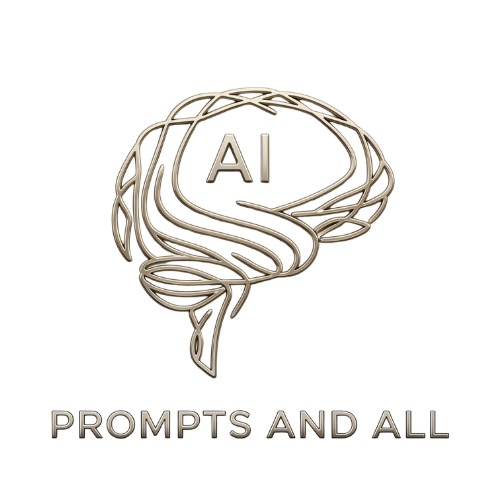




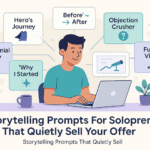

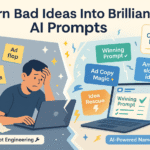
Recent Comments